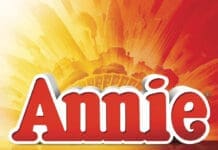By Melanie Stewart
 Have you ever picked one grocery item over another because of the health claims on the label? You may have been duped. That’s because terms like fat free or all natural are often slapped on a food item that may not be healthy at all. Frustrated? You’re not alone. Nearly 59% of consumers have a hard time understanding nutrition labels, according to a Nielsen survey.
Have you ever picked one grocery item over another because of the health claims on the label? You may have been duped. That’s because terms like fat free or all natural are often slapped on a food item that may not be healthy at all. Frustrated? You’re not alone. Nearly 59% of consumers have a hard time understanding nutrition labels, according to a Nielsen survey.
NO SUGAR ADDED? This does not mean there is no sugar in the product. The product could still be full of carbohydrates and calories, so be sure to notice how many grams of sugar per serving.
FREE RANGE? Although a food label may say free range chicken, don’t assume your bird was scampering around outside the barn. Although the USDA does define the words free range, there are no requirements for the amount, duration, and quality of outdoor access.
ALL NATURAL? Don’t be fooled, all natural doesn’t mean all that much. The FDA doesn’t define it, although food makers won’t get in trouble as long as so-labeled food doesn’t contain added colors, artificial flavors, or “synthetic substances.” That means there’s room for interpretation. What you think it means: It’s healthy, pure, and good for you. What it actually means: Who knows, this claim is not regulated. I’ve seen this label on all kinds of things I would not consider 100% natural.
It is potentially misleading to say meat is all natural. All fresh meat qualifies as natural, as it doesn’t contain additives and is not more than minimally processed – so, this phrase is useless. Similarly, grass-fed: Nearly all cattle are fed grass at some point in their lives, so this term is virtually meaningless. Even Angus beef can be misleading as nearly 65% of cattle are black-hided and receive the Angus stamp, but only 25% of Angus-influenced cattle actually meet Certified Angus Beef standards, which are the criteria that truly make a cut of beef the best quality.
1. AMERICAN GRASSFED LABEL (BEST) If you want beef from cows that grazed exclusively on grass for their entire lives, look for the American Grass-fed label, which requires that animals were raised on pasture and have never been confined, fed grain or given antibiotics or hormones.
2. CERTIFIED ORGANIC (2nd BEST) Certified organic meat must come from pasture-raised animals and have never been given antibiotics or hormones.
3. CERTIFIED ANGUS BEEF vs. Angus beef
4. PASTURE-RAISED While there is no specific pasture-raised certification, animals raised this way can roam freely in their natural environment.
5. RBGH-free or rBST-free Signifies that the product came from cows that were not treated with a genetically engineered growth hormone that artificially increases milk production but which may cause health problems in humans.
How about PRODUCE? With produce it’s important to look at the 1st 3 digits of the bar-code.
Bar-codes that begin 00-09 are grown in the USA and CANADA; 40-44 are from GERMANY; 49 are from JAPAN and 50 UK, USA, or CANADIAN. These are the ones that I prefer. Bar codes that begin with 690, 691 or 692, the product is made in China. 471 is made in Taiwan. Personally, I avoid these products as many chemicals banned from use in growing food in the U.S. can be used in foreign countries on food to be exported here. It is important to read the barcode to track its origin. Many products no longer list where they were made or grown, only where the distributor is located.
NOTE: 5 digits beginning with 9 #### is ORGANIC, 5 digits beginning with 8 #### is genetically modified. I try to avoid ALL GMO products.
Melanie Stewart has written two books for children (Yum Tum, Good Food is Fun! and Yum Tum, We Get it Done!) and one for adults (Yum Tum For Everyone!) all available on Amazon or at: https://www.yumtumnutrition.com/ All content is commentary or opinion and is protected under Free Speech laws. It’s not meant to give individual medical advice or to make any health claims on the prevention or curing of diseases.





























































